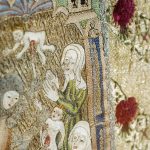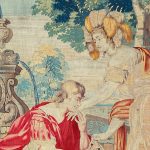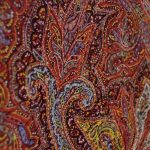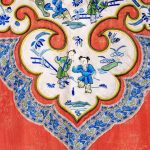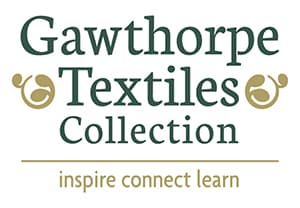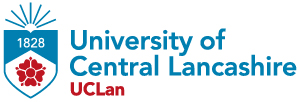This is a commercial sample of a type of fabric known as ‘madras’, which at the time this fabric was produced referred to a lightweight cotton with a woven check. The check could form an all over pattern, as seen in this example, or it could be woven as borders or in stripes with plain […]
View moreThe Whalley Abbey Vestments are a set of exquisitely embroidered Medieval ecclesiastical garments with the full set comprising of a chasuble, two dalmatics and a maniple. Of these, the chasuble, maniple and one dalmatic are in the collection of Towneley Hall, while another matching dalmatic resides in the Burrell Collection in Glasgow. These vestments are […]
View moreA selection of jacquard designs and fabric samples produced by Birtwistle &Oddie Ltd of Prospect Mill, Wharf Street, Blackburn. The company was founded at Prospect Mill in 1907 by H. H. Birtwistle and A. M. Oddie. The company remained there until 1972 and was known for producing jacquard woven brocades, and later cotton and rayon […]
View moreThe four Tapestries situated in the Drawing Room of Astley Hall date from the mid-17th Century and depict the mythological story of Jason and his quest for the Golden Fleece. They were made in Flanders (Northern part of Belgium) and according to the records of the Victoria and Albert Museum there are only two other […]
View moreThis beautiful textile is an example of an amli shawl, a technique where small woven pieces are hand sewn together and then further embellished with embroidery. Every step of the making process was labour intensive and required high skill levels meaning that amli shawls were highly prized luxury items. Unlike many other styles of shawl […]
View moreFinely woven Kashmir wool shawls from India became status symbols in Europe in the 18th century, and were considered the height of fashion up until the 1870s. As highly desirable commodities, factory-owners in Europe were quick to capitalise on their appeal and employed new industrial machine weaving methods to maximise profits. Towns such as Norwich, […]
View moreThis Qing era robe has a typical straight cut, loose fitting body with square sleeves. The simple shape is designed to make efficient use of narrow widths of silk so that as little as possible of the expensive silk fabric is wasted when the garment is constructed. The main fabric is a lightweight silk with […]
View moreThis yellow brocaded silk was probably intended for use as garment fabric – perhaps as a woman’s gown or a man’s coat or waistcoat. The silk has a damask weave creating a self-coloured background pattern overlaid with vibrant, colourful floral sprays that have been added with additional brocade weaving. The brocade is further enhanced with […]
View more
